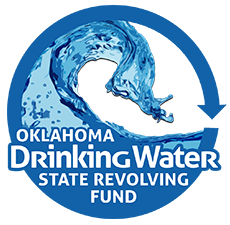
OKLAHOMA CITY — The state Department of Environmental Quality plans to apply for more than $7 million in federal funding for the state’s 2024 Drinking Water State Revolving Fund Intended Use Plan and Project Priority Lists.
The DEQ announced plans to hold a public hearing to receive comments on the draft proposal. The hearing is scheduled for June 19 at 1:30 p.m. in the DEQ Multipurpose Room, 707 N. Robinson Avenue in Oklahoma City.
From 1997 through 2022 Oklahoma’s DEQ received $449,747,000 in federal appropriations for DWSRF “capitalization” grants. The June19 hearing is a requirement for the state’s application for a $7,177,000 federal Capitalization Grant approved by Congress.
The grant is not totally free to the state. Federal guidelines require Oklahoma to provide 20% in matching funds for each capitalization grant.
A total of $242,650,569, less “set asides,” will potentially be available during State Fiscal Year 2024 to fund 57 projects listed on the combined Project Priority List. DEQ anticipates $6.6 million in “set asides” that include administration, small system technical assistance, state program management, and local assistance.
The towns and projects on the priority list were not included in the DEQ’s announcement.
The Drinking Water State Revolving Fund program is administered jointly by the DEQ and the Oklahoma Water Resources Board.
Similar to previous years, substantial demand for drinking water funds exceeds capitalization grants and state match amounts. DEQ and the OWRB may issue revenue bonds to finance the additional demand. The bonds will be sized based on the amount of identified need, and a portion of the proceeds may include funds for providing the state matching funds.
For any fiscal year, 15% of a federal capitalization grant must be available solely for providing loan assistance to public water systems that regularly serve fewer than 10,000 persons, to the extent such funds can be obligated for eligible projects of public water systems.
The DWSRF project priority system provides for priority points to be given to projects that benefit “disadvantaged communities.”
[A “disadvantaged community” is one that serve a population whose median household income is greater than 80% but less than 90% of the national MHI according to the U.S. Census Bureau/American Community Survey. Communities serving a population whose MHI is less than 80% of the national MHI according to the Census Bureau/American Community Survey will be designated as “severely disadvantaged communities”.]
The DWSRF is mandated to provide a minimum of 12% and a maximum of 35% of the capitalization grant to disadvantaged communities primarily serving 10,000 population or fewer. However, if a system serves more than 10,000 residents and the proposed project is to impact a disadvantaged area, low income, or people of color, the project will be considered for this subsidy.
During State Fiscal Year 2024 (July 1, 2023, through June 30, 2024), $861,240 (12%) is available for communities that meet the above definition. The amount of subsidy per project will be $200,000 or 20%, whichever is less. For a severely disadvantaged community with a project costing less than $400,000, the amount of subsidy will be decided on a case-by-case basis.
During SFY 2024 the DEQ will apply for $30.6 million in General Supplemental Funds approved by Congress. The subsidy from this allocation will be provided only to towns that meet the state definition of “disadvantaged community.” During SFY 2024, $14,994,980 (49% of the supplemental funds) will be available to disadvantaged communities.
Some communities will qualify for ‘loan forgiveness’
• Disadvantaged communities that serve 10,000 or fewer people will receive 100% loan forgiveness up to $800,000 for eligible project and costs. Not all costs/fees, or incurred costs, will qualify for funding. Costs must be negotiated, fair, and reasonable to be eligible/qualify.
• Disadvantaged communities serving more than 10,000 people will qualify for 25% of the loan amount or $1,000,000, whichever is less, as loan forgiveness.
• Disadvantaged and severely disadvantaged communities seeking funding for regionalization or consolidation may receive up to 100% loan forgiveness, if available.
The Lead Service Line Replacement project priority list includes $81.29 million, and most, if not all, of those communities are seeking loan forgiveness, the DEQ reported.
The Lead Service Line Replacement priority project list includes 52 projects, although the fundable list portion includes 22 projects. Expected DWSRF loan commitments for those 22 jobs total $21 million, the DEQ indicated. All of those communities (which are not identified in DEQ records) meet the state definition of a disadvantaged community.
DWSRF funds are subject to federal requirements such as Davis-Bacon Act prevailing wages and American Iron and Steel provisions, DEQ noted.
A copy of the DWSRF draft plan is available on the DEQ website at: https://www.deq.ok.gov/wp-content/uploads/water-division/Draft-IUP-SFY24.pdf. A copy also can be obtained by contacting Vicki Reed at (405) 702-8128, or by email at vicki.reed@deq.ok.gov, or by mail at Water Quality Division, DWSRF Section, Department of Environmental Quality, P.O. Box 1677, Oklahoma City, OK 73101-1677
The public comment period will remain open until June 20.

